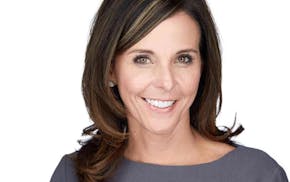Shena Idoko is about to trade rent of $1,110 per month for a new house being built in St. Paul's North End that will cost her about $1,200 per month to cover principal, interest, taxes and insurance.
"It will double the size of our living space, including four bedrooms, two bathrooms, and an attached garage," said the divorced mother, who will move from an apartment in Shoreview. "This is a good fit for me. My daughter already goes to Adams Spanish Immersion School in the North End, and we like the neighborhood and the North Dale Recreation Center."
It's not easy for working-class folks to get into a Habitat for Humanity home.
Idoko, 31, who has a master's degree in health care administration, earns $50,000 a year as a project manager for a health care institute.
She spent 200 hours in Habitat for Humanity homeownership and personal-finance classes and also is contributing another 100 hours of "sweat-equity" work on her new home.
Twin Cities Habitat, benefiting from a recent $100 million mortgage program with Bremer Bank and other capital-raising efforts, expects to help 110 working-class families get into a new or refurbished home this fiscal year. Habitat has nearly doubled its annual housing production over the last several years, thanks largely to the multiyear partnership with Bremer.
The 11 St. Paul single-family homes near Willow Reserve on the North End are valued at about $230,000 apiece.
The $2.5 million development is rising on what for years was a vacant, polluted commercial site.
The project also received $700,000 in federal and local government cleanup grants. Ecolab, a corporate supporter, provided $250,000 to construct a public alley, stormwater retention pond, sewer and water connections.
This is not affordable housing for poor people. Habitat home buyers are working-class families. They need stable jobs and an income to qualify.
For example, a family of five earning up to $77,700 may qualify to buy a home through Twin Cities Habitat. Recent buyers included pharmacy technicians, bus drivers, restaurant workers, an interpreter and others cobbling together household income with two or more jobs.
The Habitat model long has depended on considerable volunteer labor from business, churches and service clubs. That's on top of paid, skilled workers on projects that have to meet all applicable building codes.
Habitat Twin Cities also raises philanthropic dollars to plug the difference between what these families can afford to pay, typically limited to 30% of household income, and the higher payment to afford quality housing.
For example, $12 million of Habitat's $26.2 million in revenue came from donations from individuals, business and foundations in the Twin Cities area in the fiscal year that ends on June 30.
About 90% of Habitat homeowners are minorities, noted Twin Cities Habitat CEO Chris Coleman, the former St. Paul mayor. Habitat, which is considered one of the 15 or so largest housing developers in the Twin Cities, is doing what it can to close the homeownership gap between minorities and whites.
The Bremer partnership, struck in 2017, has been huge in Habitat's recent expansion.
"There were only so many houses we could build with the volunteer model," noted Coleman, a business lawyer before taking office at city hall. "We certainly are happy with their partnership."
The Bremer capital, negotiated by Coleman's predecessor at Habitat, Susan Haigh in 2016, is in its second year. Bremer, St. Paul's flagship bank, agreed to make or buy up to 500 Habitat loans worth nearly $100 million at 1 percentage point less than the average for a 30-year, fixed-rate mortgage. Bremer may reset the loan rate every two years in response to interest-rate movements.
The Bremer fund has allowed Habitat to acquire used houses that require some rehabilitation, upgrade them and make the Bremer-capitalized loan to qualified families. That's where the most-rapid growth of Habitat housing has come since 2018.
Bremer CEO Jeanne Crain said the bank is very pleased with its Habitat partnership.
"They are smart about what it takes to insure homeownership. They ready buyers through budgeting and commitment," she said.
"This is a great way to lend to the lower- to moderate-income category of borrowers. And we can lend successfully. We're up to 175 borrowers and a little over 25% of our $100 million commitment. It's a high-performing portfolio."
Habitat buyers are getting good deals in a very tight Twin Cities market, marked by rising prices and few low-priced starter homes. The growth in housing has been in high-end luxury units.
The median sale price of a home rose to a record $281,000 in April, according to the Minneapolis Area Realtors.
Coleman has said the goal of the Habitat-Bremer program is to serve families "who may not have quite enough income to borrow through a traditional lender" or those who need to work through a past credit issue.
The early-stage program also has drawn business interest.
"What's cool is our design of the program has led to a model for [other Habitat chapters]," Crain said. "And a bank in Chicago and elsewhere have copied it. We'd love to see other banks get involved."

St. Anthony: 'Patient' investing paying off for St. Paul's Hill Capital

Jennifer Smith, leader of Burnsville's Innovative Office Solutions, has died

St. Anthony: Medical professions in Minnesota need more people of color in their ranks


